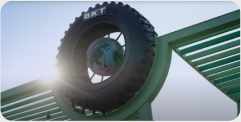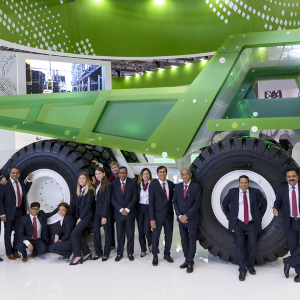Did you know that tire pressure is influenced by temperature changes and the climate? Discover how to handle and prevent pressure jumps in your tires.
We’ve already seen how regular tire maintenance not only improves your tires’ performance record, but actually increases durability. Of all the precautions and methods regarding tire care, the most important by far is regular pressure checks: optimal pressure (recommended by the manufacturer) = optimum performance.

Did you know that tire pressure is heavily influenced by temperature changes and the climate? That’s right. Inflation pressure can change in hot and cold weather.
Remember taking physics in high school? We learnt that gas expands, and increases in volume when heat is present. On the contrary, it contracts at lower temperatures. The same goes for the air inside of your tires. In geographical areas where drastic changes in temperature are common, it’s ever more important to pay even closer attention to tire pressure.
It is a scientifically proven fact that pressure varies about 3-4% points at every temperature variation of 10°C (18°F) inside the tire. To put it simple:
- if temperature goes up 10°C (18°F), tire pressure increases by 3-4%;
- if temperature goes down 10°C (18°F), tire pressure drops by 3-4%.
Got it?
At any rate, the outside temperature is not the only variable to consider when checking and “adjusting” tire pressure. Also the heat generated by the tire can cause changes in pressure.
The point is...how does tire pressure affect the job?
Imagine this: your tire expert checks your tires – pressure is perfect – levels meet the exact recommendations from the manufacturer. Everything is great. Then, soon after the check-up, the outside temperature rises significantly (which often occurs in many parts of the world). In addition, the tire overheats while being used. The combination of these factors leads to a significant increase in tire pressure and a negative impact on performance.
Never forget, that overinflating tires leads to premature and uneven tread wear - the number 1 enemy in many applications.
The same “principle” applies the opposite way: if the outside temperature drops drastically (during harsh winters, for example) or if tires are used on icy or snowy surfaces, the pressure will decrease, worsening traction and maneuverability, damaging the tire casing and increasing fuel consumption.

What’s the best way to handle the situation and how to prevent pressure jumps?
We strongly recommend that you carefully follow the manufacturer's instructions. Remember that the recommended nominal pressure rates relate to checks done in the morning - when the vehicle is cold - before vehicle and tires have been used.
When outdoor temperatures change drastically (extreme cold or scorching heat), you might have to deviate from the recommended pressure in order to remedy any problems linked to pressure variation. Beware, don’t try out things for yourself! Always consult your tire specialist to assess the situation - vehicle, application, temperature and climate – when fine-tuning inflation pressure.
So, never forget: for any questions regarding optimal tire inflation pressure and effects the temperature has on tires, always check with your tire dealer.





